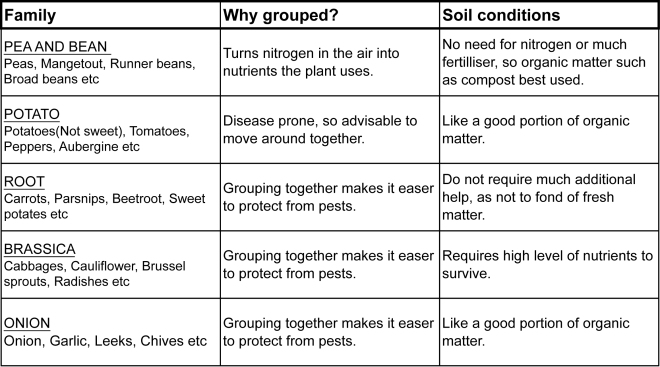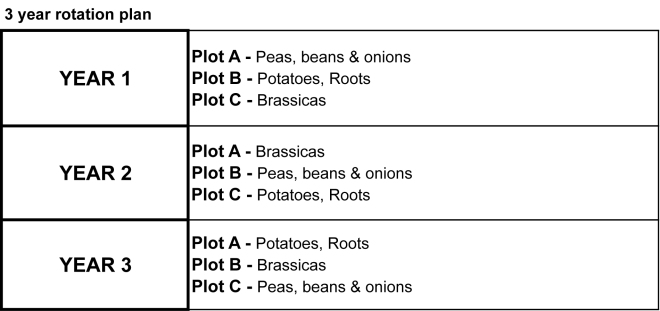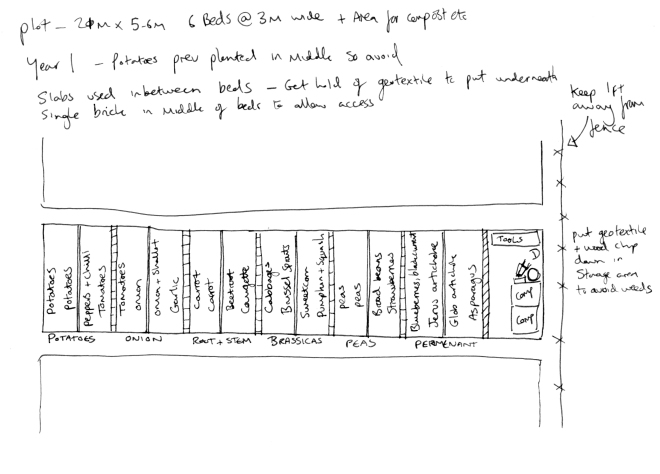In my last post I brushed on the topic of a rotation plan for you plot. I wanted to go into a bit more detail about this as it’s also new to me, and I think it is a very important base to a successful crop.
A rotation plan is essentially a system which moves the vegetable and fruit groups around your plot each year. You can get anything from a 3 year to 5 year rotation system, which basically means it would be 5 years until the same vegetable group would be in the location where it started in year 1.
This is done for 2 main reasons. Firstly it stops your soil being exhausted by the same crop taking the same nutrients each year. It also reduces the risk of disease establishing and becoming difficult to get rid of. So you can see why this is so important to the success of your plot.
Below are the vegetable groups you will be using in your plot, and what vegetables are included in each group.
You can be flexible with how you design your rotation. If you have a decent size then try to go for the 5 year rotation plan. Our plot is twenty by 5 metres, which is plenty big enough to fit that in. If perhaps you are doing this in your back garden or a smaller space, then don’t feel like you have to squeeze it all in. Go for a 3 year rotation plan, or just ensure that you do not plant the same crop in the same place each year. And of course if you really detest the vegetables in the Brassica group then don’t plant them! Below is an example of a 3 year rotation plan.
Amongst this you will also be able to sneak in certain crops. Not all crops need to be rotated, and if you find a bit of space then slot them in there. These crops include courgettes and squashes, along with leaves such as lettuce and spinach. These can essentially be fitted into your overall rotation plan, which if you look at my plan below shows how I have achieved this.
Lastly, if you have the space then set aside a bed for more permanent crops. There are a variety of crops out there that are perennial , which means they take 2 years to produce anything. These include crops such as asparagus and artichoke.
To summarise; create a rotation plan that suits your plot and your needs. Once decided, separate your plot either by raised beds or paths. Make sure you have a plan drawn up so you know what the next stage is the following year. After all this the next stage is prepping your plot. In my next post I will be looking at what tools are helpful to achieve this.



